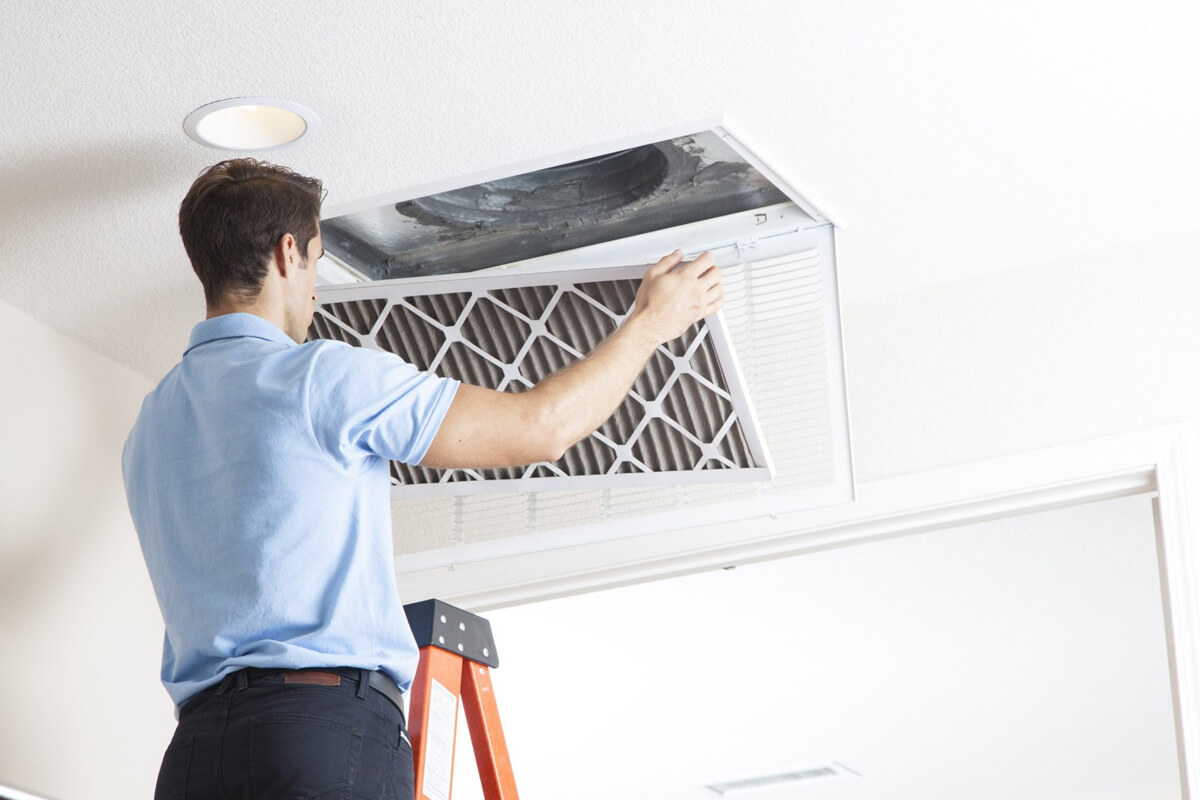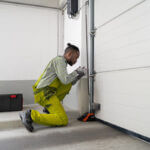Clean air filters protect your family’s health and keep your HVAC system running efficiently. Replace your home air filters every 30-90 days depending on filter type, pets, allergies, and home conditions. Regular replacement prevents costly repairs, reduces energy bills by up to 15%, and improves indoor air quality.
- How Often Should You Change Different Filter Types?
- 7 Warning Signs You Need to Replace Your Filter Now
- How to Replace Home Air Filters Step by Step
- How to Choose the Right Air Filter for Your Home
- Smart Air Filter Technology and Modern Solutions
- Health Benefits and Energy Savings
- Filter Maintenance Tips and Best Practices
How Often Should You Change Different Filter Types?
Most homeowners should replace their furnace filter every 90 days, but timing varies by filter material and home conditions. The frequency of air filter replacement depends on several critical factors.
Fiberglass filters need monthly replacement due to basic filtration capabilities. Due to their lower quality and shorter lifespan, these filters typically need to be replaced every 30 days. Pleated filters last 90 days and trap smaller particles like pollen and pet dander more effectively through their folded design creating more surface area. High-efficiency filters can last up to six months but require monthly inspection for optimal performance.
You’ll need to switch out your air filter more often if you have a pet, or have someone living in the home who is a smoker or who has allergies. The filter lifespan decreases significantly in homes with multiple pets or construction dust, requiring monthly changes regardless of filter type. During wildfire season or high pollen periods, filter maintenance should include bi-weekly inspections and early replacement if visibly dirty.
7 Warning Signs You Need to Replace Your Filter Now
Your HVAC system provides clear indicators when filter replacement becomes urgent. When you see dust accumulating on surfaces in your home or visible signs of dirt or discoloration, these are signs that your air filter needs to be replaced.
Reduced airflow from vents indicates a clogged filter forcing your system to work harder. Higher energy bills often result from restricted airflow making your HVAC run longer cycles. The Department of Energy has estimated that a clogged air filter causes the heating and cooling system to use 15% more energy than when the air filter was new. Worsening allergies or respiratory symptoms suggest contaminated air circulating through dirty filtration media. Unusual odors throughout your home may indicate mold or bacteria growth in saturated filters. Check your air filtration system monthly, and trust your nose – musty smells mean immediate replacement is needed.
How to Replace Home Air Filters Step by Step
To replace your furnace filter, first locate the return air vent. It’s usually found on an interior wall or ceiling and may be painted to match the surrounding surface. Turn off your HVAC system for safety before beginning the filter changeout procedure.
Remove the old filter by opening the return air vent cover or accessing the filter compartment near your furnace. Always check the airflow arrows on the filter before installation to ensure proper furnace filter replacement. The arrows should point toward the blower motor, typically away from the return vent.
Choosing the Right Filter Size and Direction
Measure your filter slot if you don’t know the dimensions, or check the old filter’s measurements printed on the frame. Common filter dimensions include 16x25x1, 20x20x1, and 20x25x4 inches. The third number indicates filter thickness.
Filter orientation matters critically – arrows on the filter frame show airflow direction. Install with arrows pointing toward the furnace or air handler, not toward the return vent. A backwards filter reduces efficiency and can damage your system components.
Safe Removal, Cleaning, and Installation
Carefully slide out the old filter, avoiding shaking to prevent dust dispersal. Dispose of disposable filters immediately in a sealed bag. Washable filters should be rinsed with cool water and dried completely before reinstalling, though most washable filters have lower MERV ratings and can’t trap fine particles as effectively.
Insert the new filter firmly, ensuring it fits snugly without gaps around edges. Close the access panel securely, then restart your HVAC system. Mark your calendar for the next scheduled replacement based on manufacturer recommendations.
How to Choose the Right Air Filter for Your Home
MERV is based on a national consensus standard. For all rating methods, the higher the filter rating, the higher the removal efficiency for most particle sizes. MERV ratings range from 1-20, with residential systems typically using MERV 8-13 filters for optimal particle removal.
MERV 8 filters work well for basic homes, capturing up to 90% of dust, mold, and pollen. MERV 11 filter is a mid-level filter, a step higher than MERV 8, and can remove a much higher percentage of contaminants including pet dander and allergens. MERV 13 filters offer hospital-grade air purification for households with severe allergies or respiratory conditions.
Avoid going too high – MERV ratings above 13 can restrict airflow in residential systems not designed for such dense filtration medium. True HEPA filters are designed for hospitals, clean rooms, and industrial use, not standard residential HVAC systems. Check your HVAC manual for recommended MERV ratings to prevent system damage.
Smart Air Filter Technology and Modern Solutions
Connected filters represent the cutting edge of home air quality management. Filtrete Smart Air Filters are outfitted with a sensor that connects to your smart phone’s Bluetooth, which monitors air flow and usage of your heating & cooling system – not just time.
The Woosh Smart Air Filter Kit includes the Woosh Smart Frame and one Woosh Foldable Filter Insert with highly accurate filter sensors, secure magnets for easy installation. These intelligent filtration systems track filter performance in real-time and automatically order replacements when needed.
IoT-enabled filters integrate with smart thermostats and home automation platforms. Some advanced smart filters can track both indoor and outdoor air quality, depending on the system they are connected to. During wildfire season or high pollution days, smart systems can increase fan speed or suggest keeping windows closed based on outdoor air quality data.
Health Benefits and Energy Savings
Regular filter maintenance provides substantial health and financial benefits. Indoor air contains pollutants that can affect human health. Since most people spend about 90% of their time indoors, mostly in their homes, much of their exposures to airborne pollutants will happen in the home.
Clean filters prevent mold growth and bacterial contamination that can cause respiratory illness. Mold spore exposure can lead to sneezing, coughing, watery eyes, and even exacerbate asthma symptoms like wheezing and chest tightness. Children and elderly family members are particularly vulnerable to poor indoor air quality.
Energy efficiency improvements from regular filter changes range from 5-15% on monthly utility bills. According to the Department of Energy, replacing a dirty, clogged filter can increase your system’s efficiency by 5 – 15%. This increased workload leads to higher energy consumption and potential system breakdowns requiring costly repairs.
Filter Maintenance Tips and Best Practices
Set monthly calendar reminders to check filter condition, even if replacement isn’t due yet. Take photos of filter specifications when installing new ones for easy reference when shopping. Some filter models offer a subscription service that delivers a new filter to your home on a regular schedule through services that automatically deliver replacement filters.
Keep spare filters on hand for emergency replacements during heavy use periods. Store replacement filters in dry locations to prevent moisture damage before installation. Consider upgrading to pleated filters if currently using basic fiberglass ones – the improved filtration efficiency and longer lifespan often justify the higher upfront cost.
Bottom line: Consistent air filter replacement protects your family’s health, saves money on energy bills, and prevents expensive HVAC repairs. Choose the right MERV rating for your system, swap out filters based on actual conditions rather than just calendar dates, and consider smart filter technology for automated maintenance reminders. Proper HVAC filter maintenance ensures optimal system performance while maintaining healthy indoor air quality year-round.





